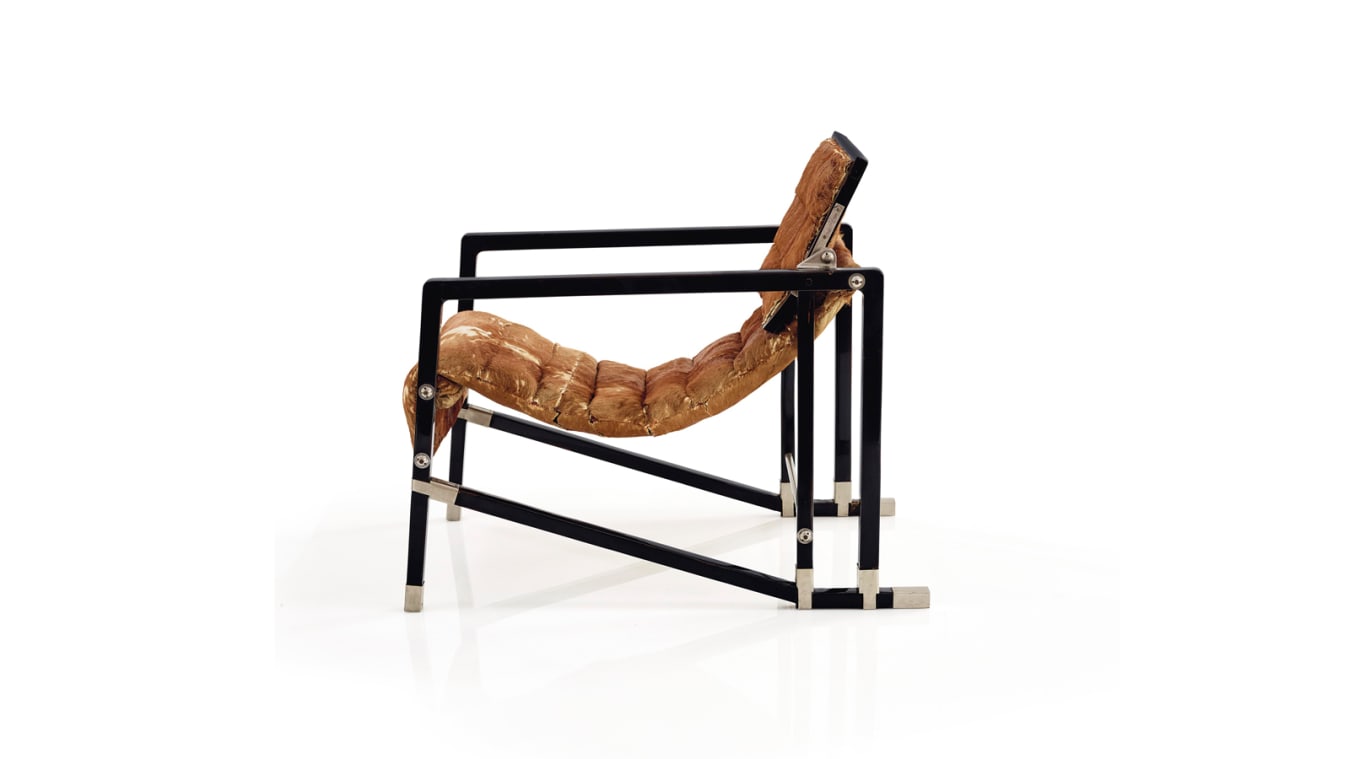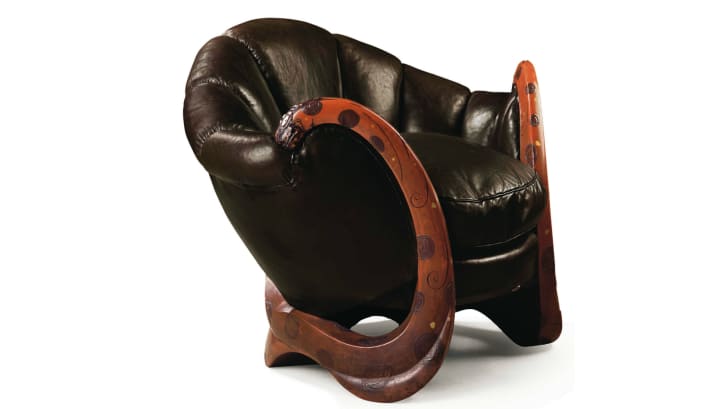Believe it or not but some one just paid 28 million dollars for this chair and here is why

On June 20, Christie's New York will offer a wood-and-brass armchair upholstered with calfskin at its summer design auction. The 90-year-old "Transat" armchair, designed by the late Irish architect and designer Eileen Gray, has an official estimate of $1 million to $1.5 million, making it the highest-valued piece of contemporary design on offer from a major auction house this month.
A million dollars is, objectively, a lot of money -- and yet not uncommon in the rarefied world of luxury furniture auctions.
Why art auction records keep being broken
In 2009, Gray's brown leather "Dragons" chair sold for approximately $28 million at a Christie's auction, setting the standing record for a piece of 20th-century furniture. And three years ago, British designer Marc Newson set the record for a living designer when one of his Lockheed aluminum-and-fiberglass chaise longues sold for $3.7 million.
Today, buying a chair at auction is akin to buying a painting in a number of ways. Yes, it's expensive. Yes, it's competitive. And yes, most people just do not "get" it.
While Gray is not a household name, among design circles she has attained what Beth Vilinsky, Christie's senior specialist for design, calls "mythical status."
In recent years, 13 of Gray's designs have sold for more than $1 million, including a "Transat" chair commissioned by the Maharaja of Indore that sold for $1.5 million at a 2014 Phillips auction.
As with the art market, there is, in many cases, a superior level of craftsmanship for sale, as well as an element of rarity. The "Transat" chair, with its strong lines, tactile hide seat and impressive Japanese-style lacquer work, is thought to be one of only 12.
David Rockefeller: The last of an extraordinary generation of collectors
"Her work has always performed well on the public market," Vilinsky said in a phone interview. "Her designs are viewed as being extremely modernist and forward-thinking and creative. She was extraordinarily talented and inquisitive throughout her career. Her work continually evolved."
However, it seems telling that, prior to the 2009 sale of the "Dragons" chair, which belonged to the late Yves Saint Laurent and Pierre Bergé, only one of Gray's designs had sold for anywhere close to a million dollars. (Sotheby's sold one of her folding screens for $1.2 million in 2000.)
The "Dragons armchair by Eileen Gray, which sold for $28 million in 2009, currently holds the record for a 20th-century piece of furniture at auction.

The "Dragons armchair by Eileen Gray, which sold for $28 million in 2009, currently holds the record for a 20th-century piece of furniture at auction. Credit: Christie's
"Eileen Gray is an extreme example of how elements come together and can radically shift the market for an artist or designer at auction, which is a super public way of making pricing known to the world," Rodman Primack, chief creative officer of Design Miami, said in an email.
"In fact, many prices in that sale were the result of the special provenance, which combined both celebrity and real connoisseurship, and extraordinary marketing at Christie's.
"Two near identical pieces can fetch entirely different prices based simply on the provenance and the value -- or the perceived value (of that provenance) at the time of the sale."
When it comes to radical shifts in perceived value, Kenny Schachter, an art and design expert who has followed both markets for decades, draws a comparison to the art world, where an artist can be unknown -- or even reviled -- one decade and desired the next.
"Just look at (Jean) Prouvé," said Schachter on the phone from London, referring to the French designer who has experienced a recent a surge in popularity, "and these houses of his which, aesthetically, are not terribly appealing, but they've become elevated into something altogether different. So, it's a confluence of many different things that constitute value."
Jean Prouvé's mass housing that never was
And yet, the design market is not the art market. While the record for a piece of furniture is $28 million, the record for an artwork currently stands at $450 million -- more than 15 times that.
So perhaps the question isn't "Why does a designer chair sell for a million dollars?" but "Why doesn't a designer chair sell for many times that?"
Rare Da Vinci painting smashes world records with $450 million sale
Schachter suggests a few reasons. Design sales tend to be less aggressively marketed than their contemporary art equivalents, and, due to their comparatively low prices, they're less likely to catch the attention of the international press. Also, the appeal of the most lucrative periods of American and European design don't have the same international resonance.
"A painting is a painting. It's portable, it's storable and the pictorial language is more accessible. And, culturally, it's just more widely dispersed at a certain level than '50s furniture, for instance. It's the appeal of a Basquiat versus a Prouvé," Schachter said.
"The Asian market, for instance, has really extraordinarily broadened and expanded in terms of the contemporary art market, and you won't see that kind of crazy participation at those levels, or anywhere near it, in any other sector of the collecting market."
There's a good reason Marc Newson's sterling silver tea service comes limited to an edition of ten -- the handles are made from mammoth-ivory. The rare commodity is responsibly sourced of course, but ivory is only one luxurious facet of the Australian designer's creation. Each item in the $125,000 (excl. tax) Georg Jensen set requires three months of hammering by hand (by a ninth generation silversmith, no less), and will be made to order in the 111-year-old Danish company's Copenhagen workshop.
Primack agrees that, internationally, the design market still has a long way to go before it comes close to attaining the same international reach as its contemporary art equivalent, but he says he has witnessed a growing interest in Asia for collectible design.
This is, in part, why he plans to expand Design Miami beyond its current annual showings in Miami and Basel, Switzerland, and introduce a third edition in Hong Kong in the future.
"Our galleries are selling to collectors in the region, and we see more visitors from Asia every year at the Basel and Miami fairs," he said.
"It is exciting and makes sense that, as Asia has increased importance in the international art market, it would for design as well."
Believe it or not but some one just paid 28 million dollars for this chair and here is why
 Reviewed by Unknown
on
June 09, 2018
Rating:
Reviewed by Unknown
on
June 09, 2018
Rating:
 Reviewed by Unknown
on
June 09, 2018
Rating:
Reviewed by Unknown
on
June 09, 2018
Rating:


No comments: